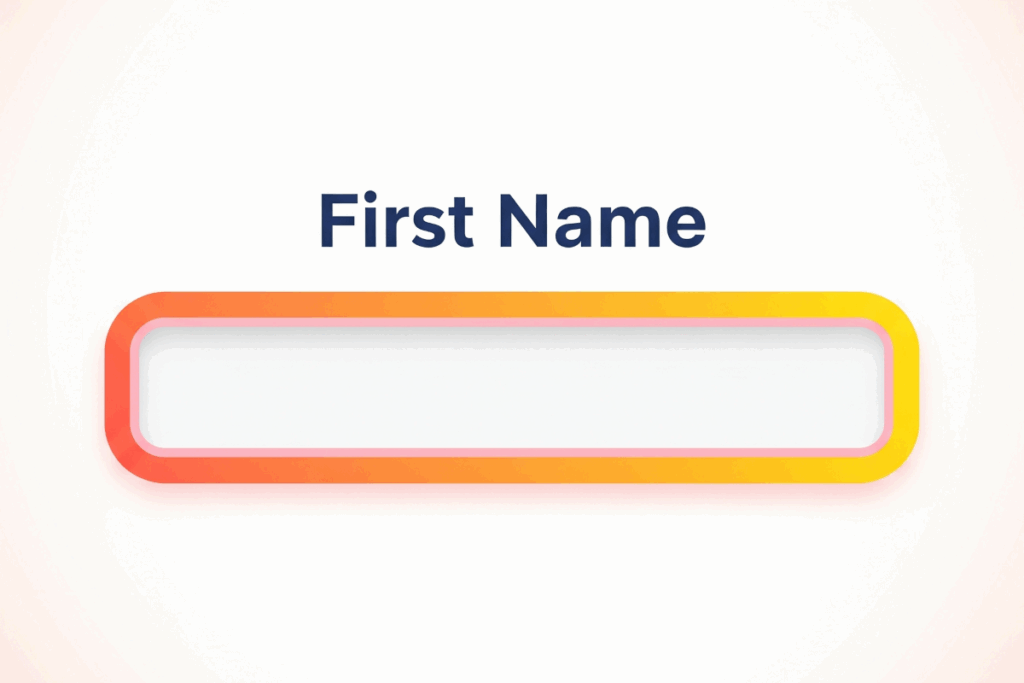Note: The creation of this article on testing Identify Input Purpose was human-based, with the assistance on artificial intelligence.
Explanation of the success criteria
WCAG 1.3.5 Identify Input Purpose is a Level AA conformance level Success Criterion. It ensures that each input field’s purpose can be programmatically determined if it matches a defined input purpose and is implemented using technologies that support semantic identification of form data. When a form uses the autocomplete attribute on fields that collect personal data, screen readers announce the purpose of each input and may suggest entries based on the user’s input. This guides users in providing the correct information and improves accessibility by streamlining form navigation.
Who does this benefit?
- People with cognitive disabilities may not understand the input’s purpose from the label alone.
- People with language, memory, or cognitive disabilities benefit from autocomplete, as it allows browsers to autofill personal information, reducing the need to remember or enter details manually.
- People with motor or cognitive disabilities may prefer images for communication and use assistive technology that adds icons to input fields to visually convey their purpose.
- People with motor impairments benefit from reduced manual input in form filling.
Testing via Automated testing
Automated testing can partially and effectively test Identify Input Purpose, but it has important limitations.
Automated tools can reliably detect the presence and validity of the autocomplete attribute, its use on supported input types, and whether expected fields (e.g., “Name,” “Email”) are missing it.
<input type="email" id="userEmail" name="email">
<!-- Missing autocomplete="email" -->Automated tools cannot determine if the autocomplete value matches the intended purpose (e.g., using autocomplete=”name” for a company name) or interpret the context of ambiguous or custom labels (e.g., “Handle,” “User tag”). Automated testing is useful for baseline checks, but requires manual review for full compliance.
Testing via Artificial Intelligence (AI)
AI-based tools bring speed and scalability to testing WCAG 1.3.5. They quickly scan large volumes of forms, identifying likely personal information fields even without proper autocomplete attributes. Trained on design patterns, AI can infer input purposes from labels, surrounding text, placeholders, or CSS classes, often outperforming rule-based tools. AI suggests appropriate autocomplete values like given-name or email, reducing developer guesswork. It also recognizes patterns in custom or unconventional forms that traditional tools often miss.
AI tools can suggest input purposes, but humans must review them due to potential misinterpretations. AI often misidentifies fields with vague labels (e.g., “username” vs. “full name”) and can’t reliably match autocomplete attributes without clear context. It may misread complex or multi-use forms, like billing vs. shipping addresses. Because AI relies on probabilistic reasoning, it struggles with nonstandard labeling. While helpful for flagging issues and offering fixes, AI still requires human oversight to ensure accuracy, especially for edge cases and sensitive data.
Testing via Manual testing
Manual testing provides accurate, context-aware evaluation of input purposes and autocomplete use, making it essential for WCAG 1.3.5 compliance. Human testers interpret labels, surrounding text, and form structure more reliably than automated tools. They detect unclear or inconsistent labels, confirm whether autocomplete attributes match the intended input (e.g., username vs. given-name), and assess complex or custom forms that may confuse AI. Manual testing also verifies how screen readers announce inputs and whether users benefit from autocomplete hints.
Manual testing takes time, especially on large or dynamic forms. Testers may miss fields or inconsistencies without a clear checklist or when forms span multiple pages. Accurate results require knowledge of correct autocomplete values. Manual testing also struggles to scale across sites with many or frequently updated forms.
Which approach is best?
No single approach for testing 1.3.5 Identify Input Purpose is perfect. However, using the strengths of each approach in combination can have a positive effect.
The best way to test WCAG 1.3.5 combines automated, AI-based, and manual methods. Automated tools quickly find missing or incorrect autocomplete attributes. AI-based testing infers input purposes from labels and context for deeper insight. And manual testing verifies ambiguous cases, ensures accuracy, and checks user experience. This layered approach balances speed, coverage, and precision.
